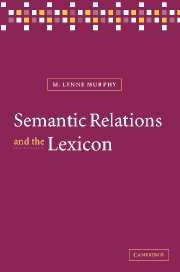References
Published online by Cambridge University Press: 22 September 2009
- Type
- Chapter
- Information
- Semantic Relations and the LexiconAntonymy, Synonymy and other Paradigms, pp. 254 - 273Publisher: Cambridge University PressPrint publication year: 2003



